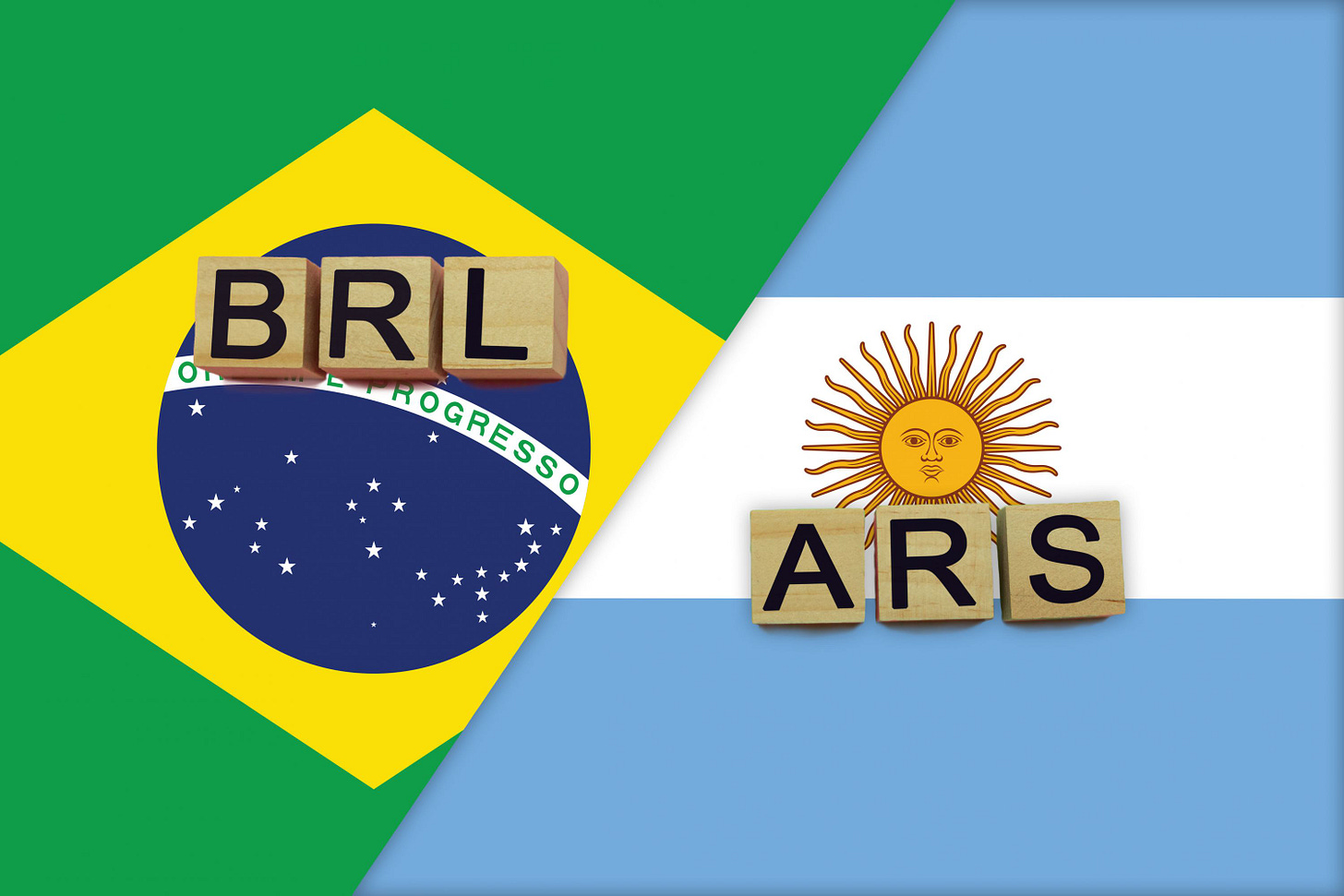Brazil and Argentina to start preparations for a common currency

According to the Financial Times, Argentina and Brazil are about to start preparations for a common currency (in principle called Sur). If the past is any indicator of the future, this announcement is just smoke and mirrors, as has been (more than once) in the past.
Argentina’s 2022 inflation rate was 95% (yes, you read that right). Why would Brazil join monetary forces with a country unable (and unwilling?) to control inflation and get its fiscal situation in order? I imagine Brazil would be more inclined to have Argentina adopt a real-based currency board, as some members of the Argentine congress are calling for than partner with an irresponsible monetary country.
It seems more likely that this announcement is an argentine political move aimed to:
Change expectations and sentiment about high inflation in an election year,
Deviate attention from other pressing issues,
Gain electoral traction by presenting an “out of the box” idea to the general public.
Internationally, some received the idea with doubts and skepticism (with some soccer humor).




Similar reactions can be found in some Argentinian economists. Others, however, see the idea with good eyes. Economist and congressman Martín Tetaz has advocated for something like this for some time (read “moneda” instead of “minera”).

The economic argument behind a common currency with Brazil is the theory of optimal currency areas (OCA). OCA has been used to advocate for a monetary integration with Brazil and criticize the dollarization proposal Emilio Ocampo and I have for Argentina.
It is more likely that a textbook application of OCA would lead to dividing Argentina into monetary sub-regions than calling for a monetary unification with Brazil. Yet, I think there are two misapplications of the OCA theory by Tetaz & Co.
The first one is to forget that the U.S. dollar is not just the U.S. currency but also the world reserve currency. An OCA analysis should not forget that adopting the U.S. dollars worldwide integration, not just with the U.S. In this context, it is also important to remember that the Balance of Payments (BoP) has a financial/capital account besides the current account. Argentina is highly sensitive to financial/capital account shocks, something that seems to be forgotten.
The second one is that OCA assumes one currency per country, and in each country, the public demands its country’s currency. In this case, the assumption is that Argentines demand the peso, and Brazilians demand the real. This is not the case. Argentines demand U.S. dollars, not pesos or reales. Creating a common currency requires the daunting task of forcing the public to adopt a currency they do not want. In this particular case, by countries with reputation problems. If you haven’t seen it, Lula da Silva questioned central bank independence only a few days ago.
Ironically, because dollarization does not require an agreement with the U.S., it is a more likely scenario than a common currency with Brazil. It would connect the country to the world reserve currency network and would mean adopting the currency of choice by the public. Another advantage is that the Treasury will collect tax revenues in the same currency it spends and issues debt.
The use of OCA to support a common currency with Brazil and criticize dollarization looks like a forced fit.




